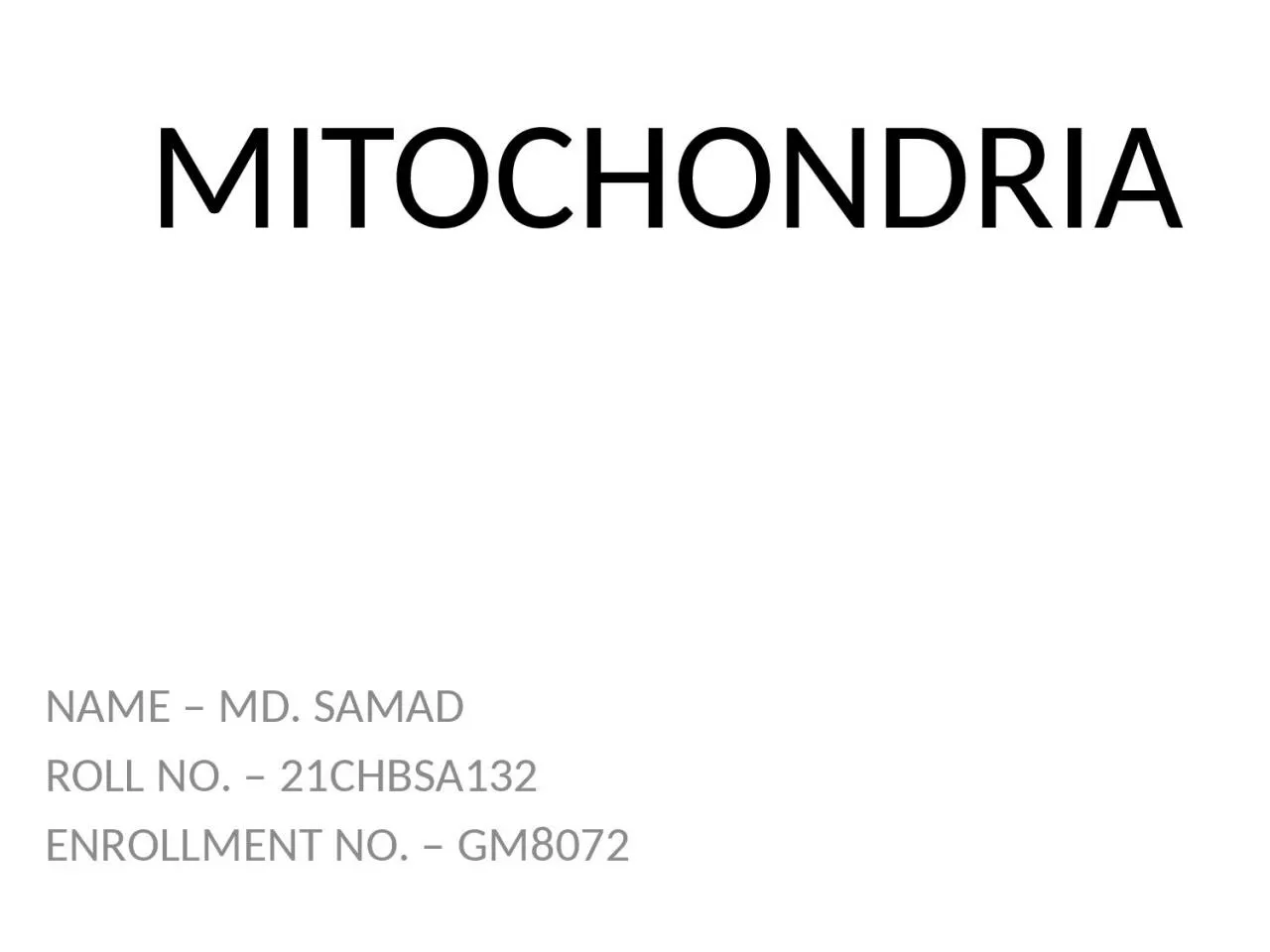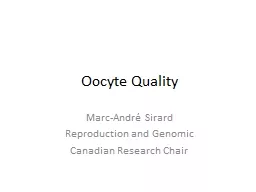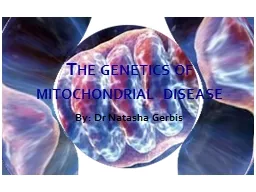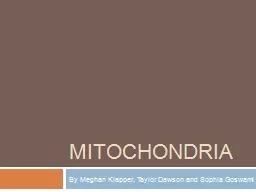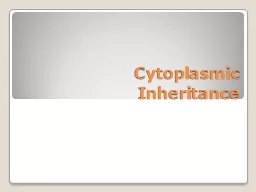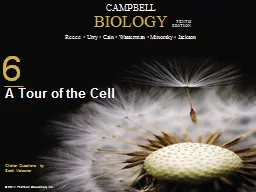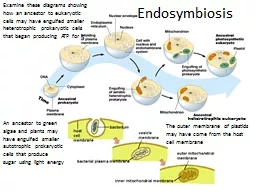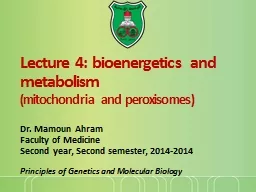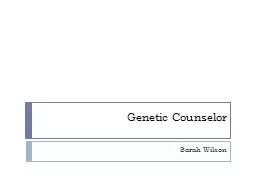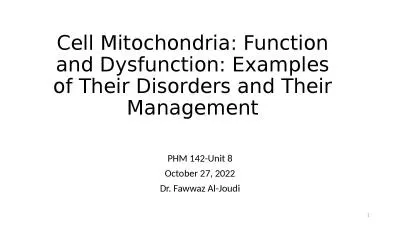PPT-MITOCHONDRIA NAME – MD. SAMAD
Author : fiona | Published Date : 2024-03-13
ROLL NO 21CHBSA132 ENROLLMENT NO GM8072 INDEX HISTORY MORPHOLOGY ORIENTATION STRUCTURE FUNCTION BIOGENESIS DISEASES REFRENCES HISTORY 1850 Kolliker first observed
Presentation Embed Code
Download Presentation
Download Presentation The PPT/PDF document "MITOCHONDRIA NAME – MD. SAMAD" is the property of its rightful owner. Permission is granted to download and print the materials on this website for personal, non-commercial use only, and to display it on your personal computer provided you do not modify the materials and that you retain all copyright notices contained in the materials. By downloading content from our website, you accept the terms of this agreement.
MITOCHONDRIA NAME – MD. SAMAD: Transcript
Download Rules Of Document
"MITOCHONDRIA NAME – MD. SAMAD"The content belongs to its owner. You may download and print it for personal use, without modification, and keep all copyright notices. By downloading, you agree to these terms.
Related Documents

